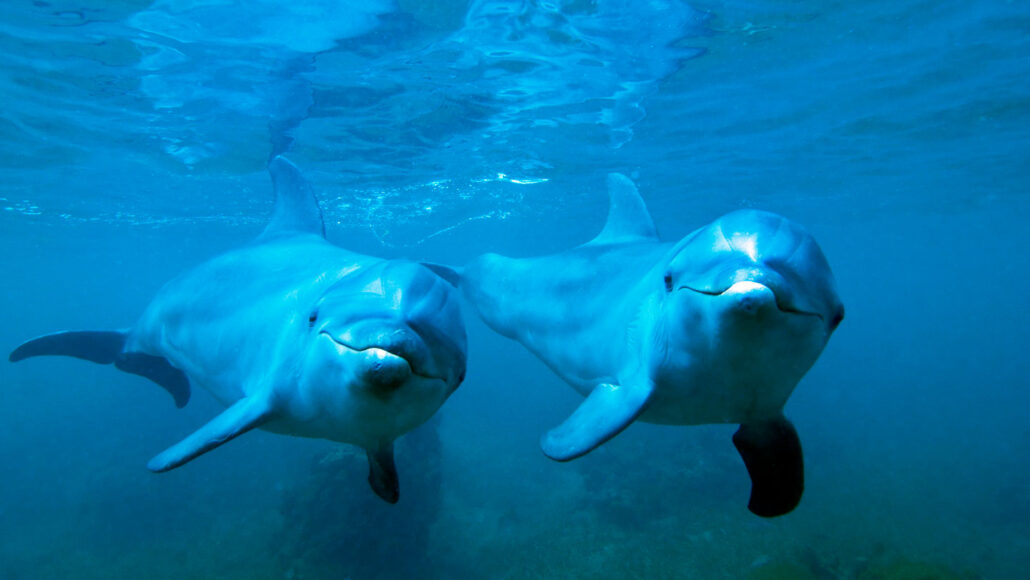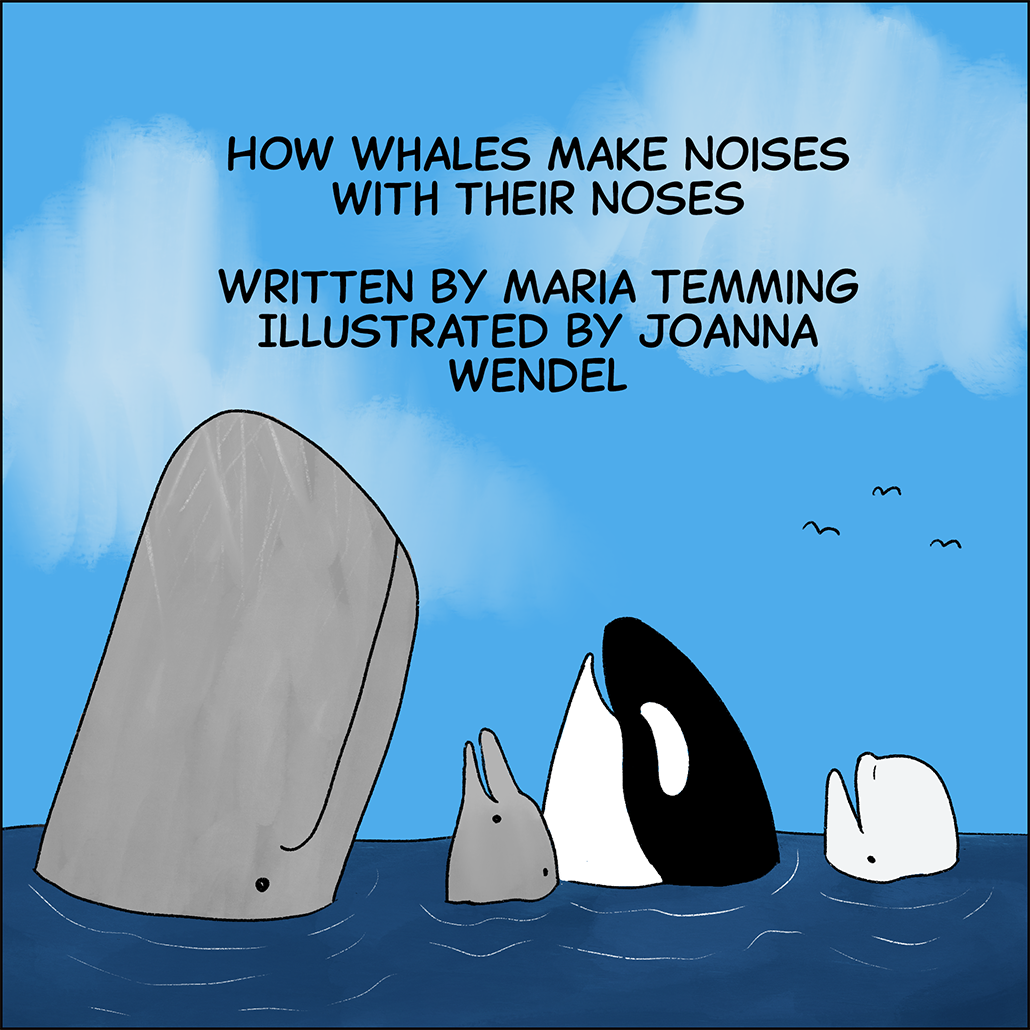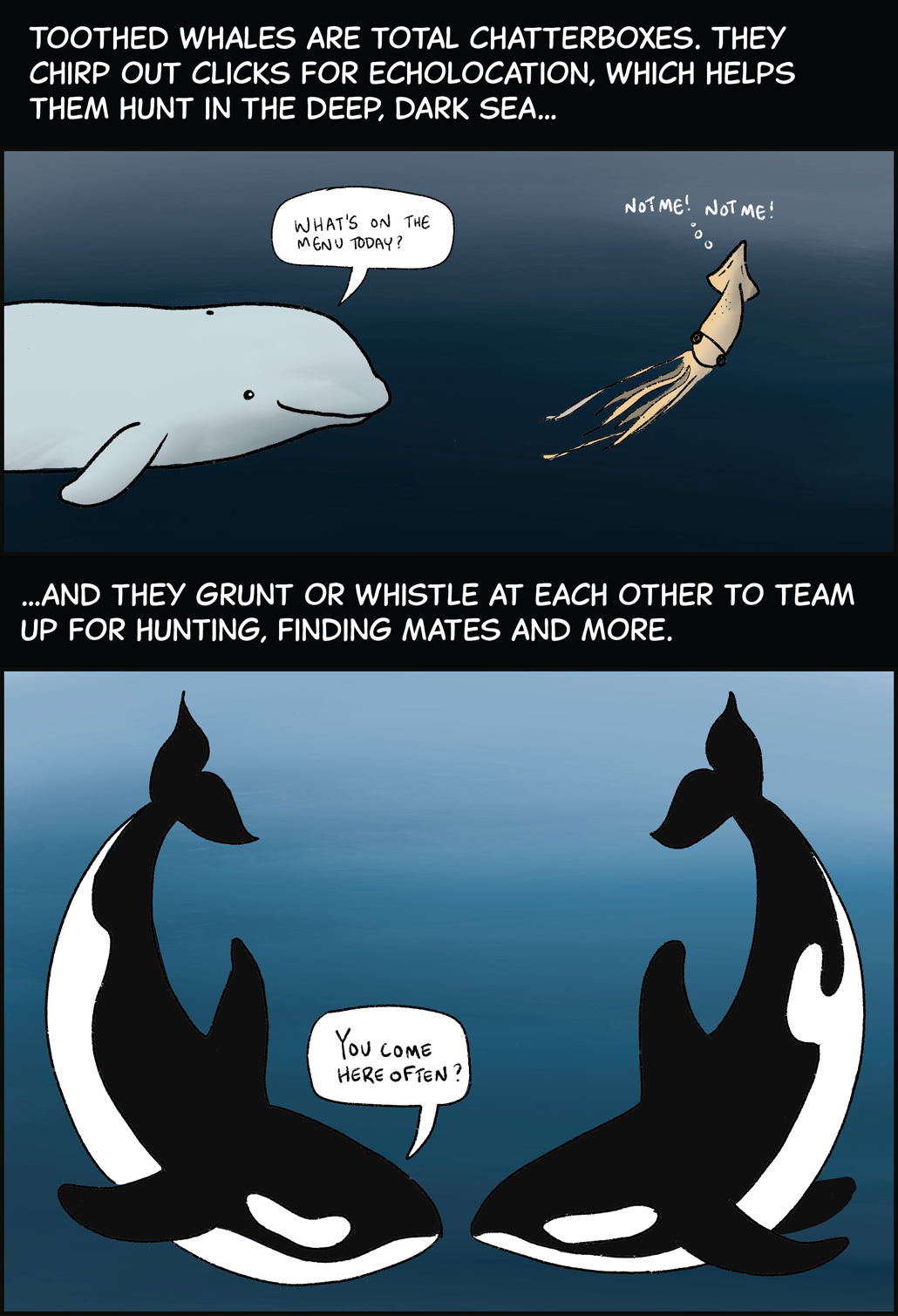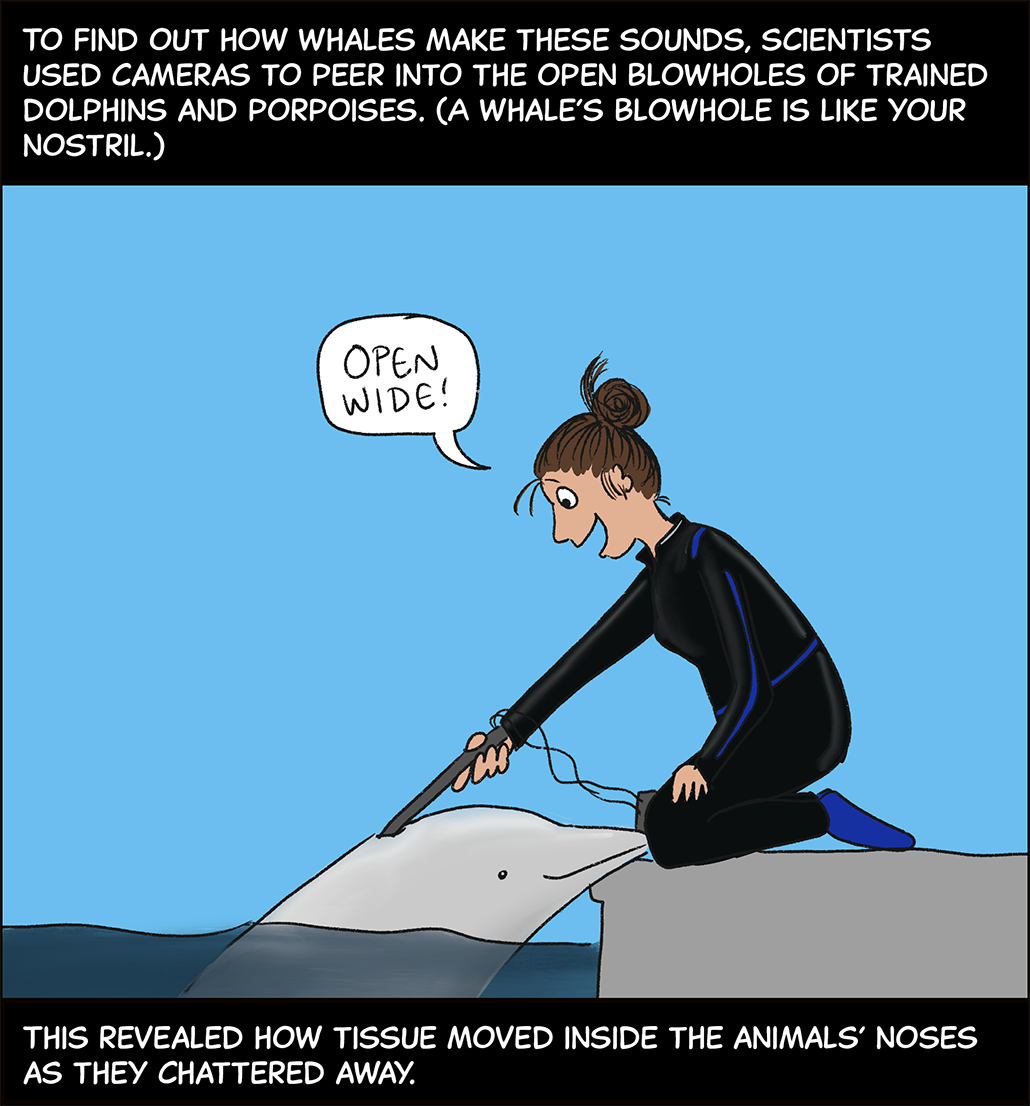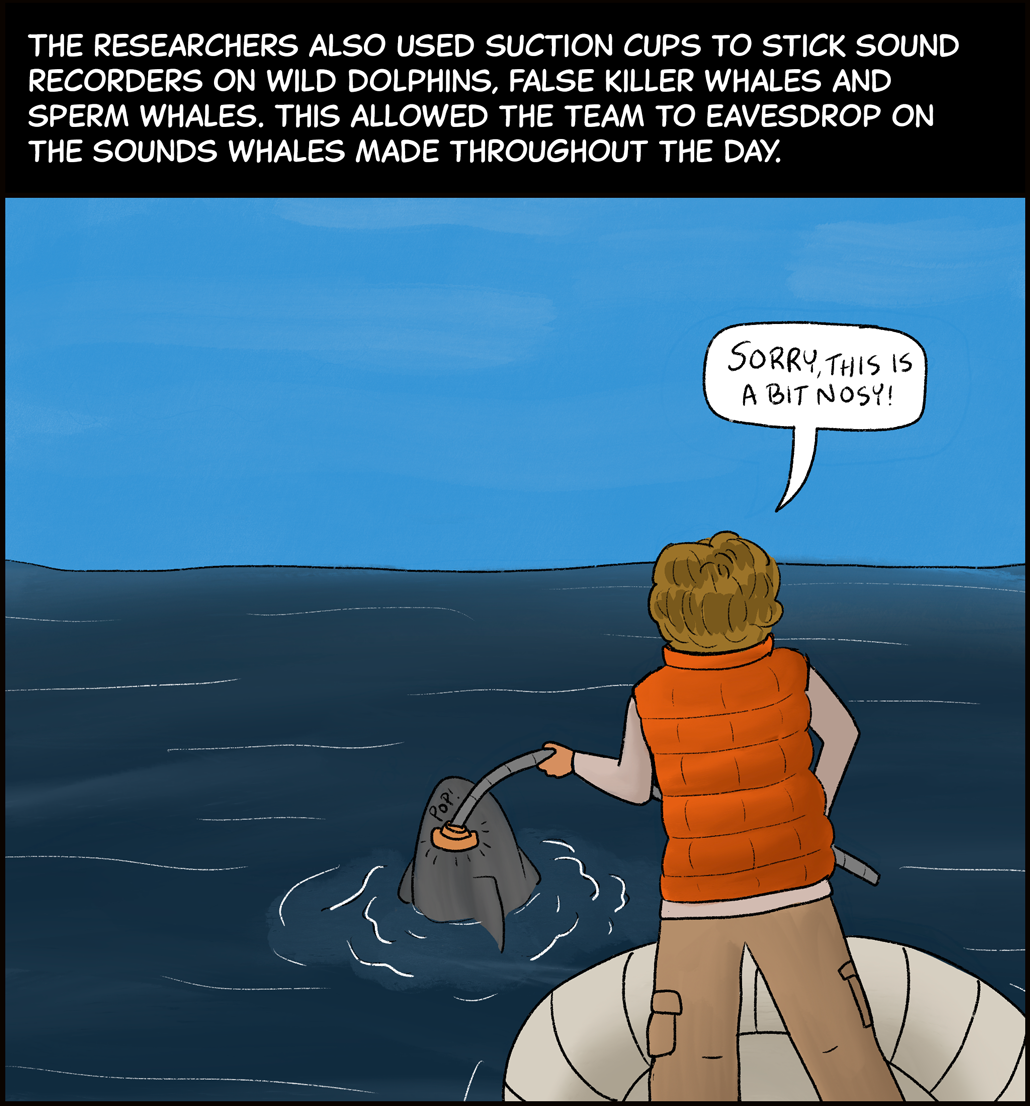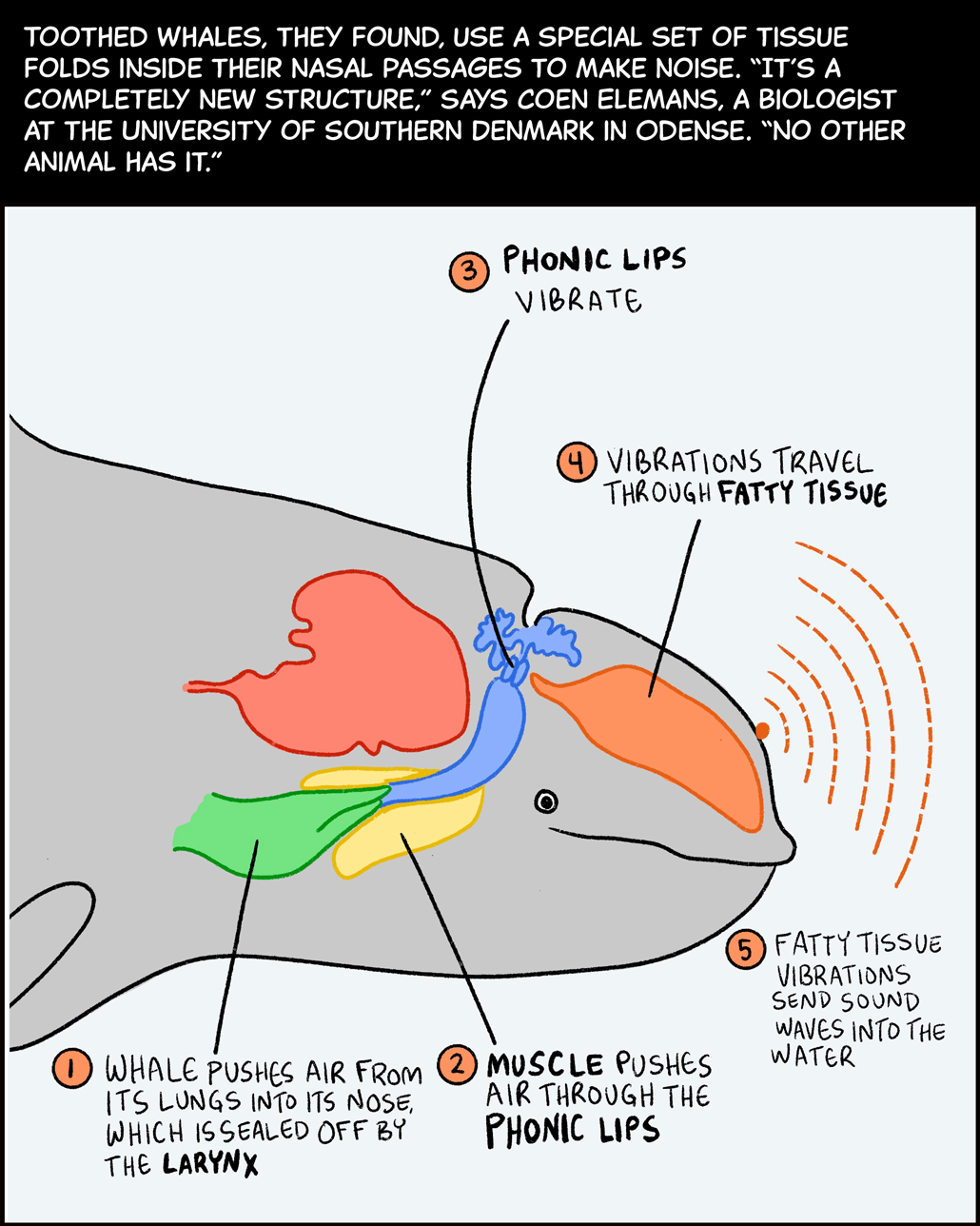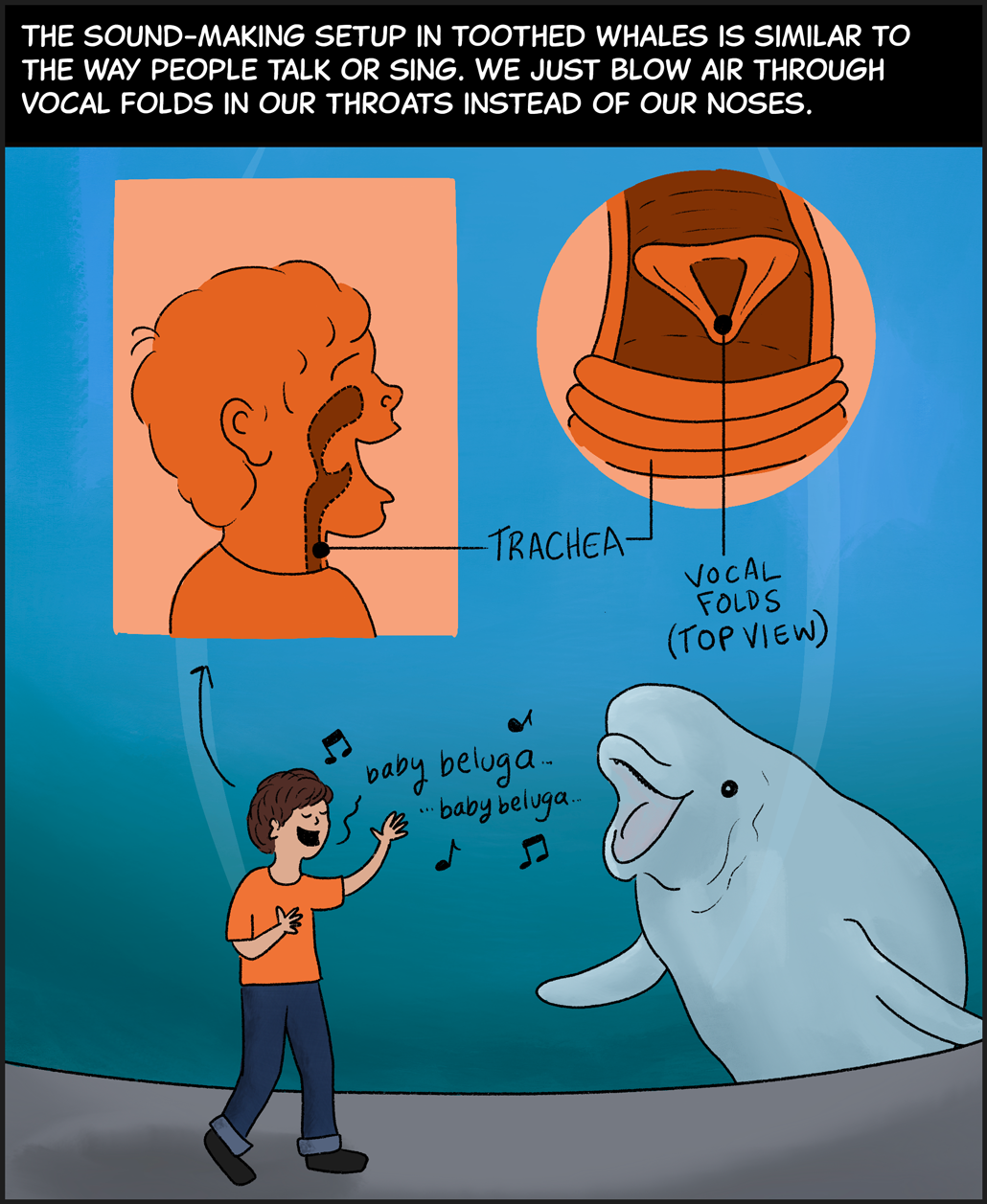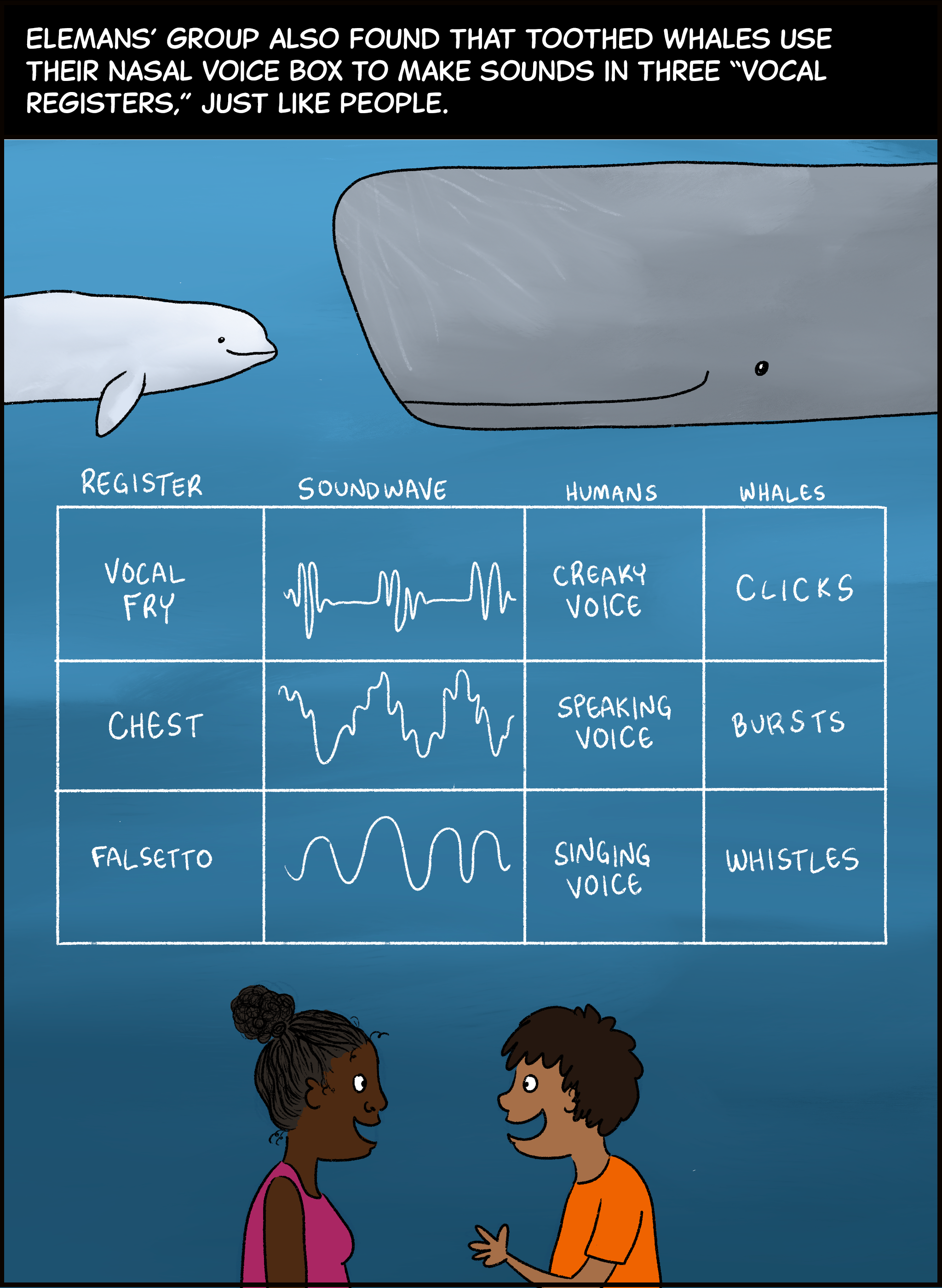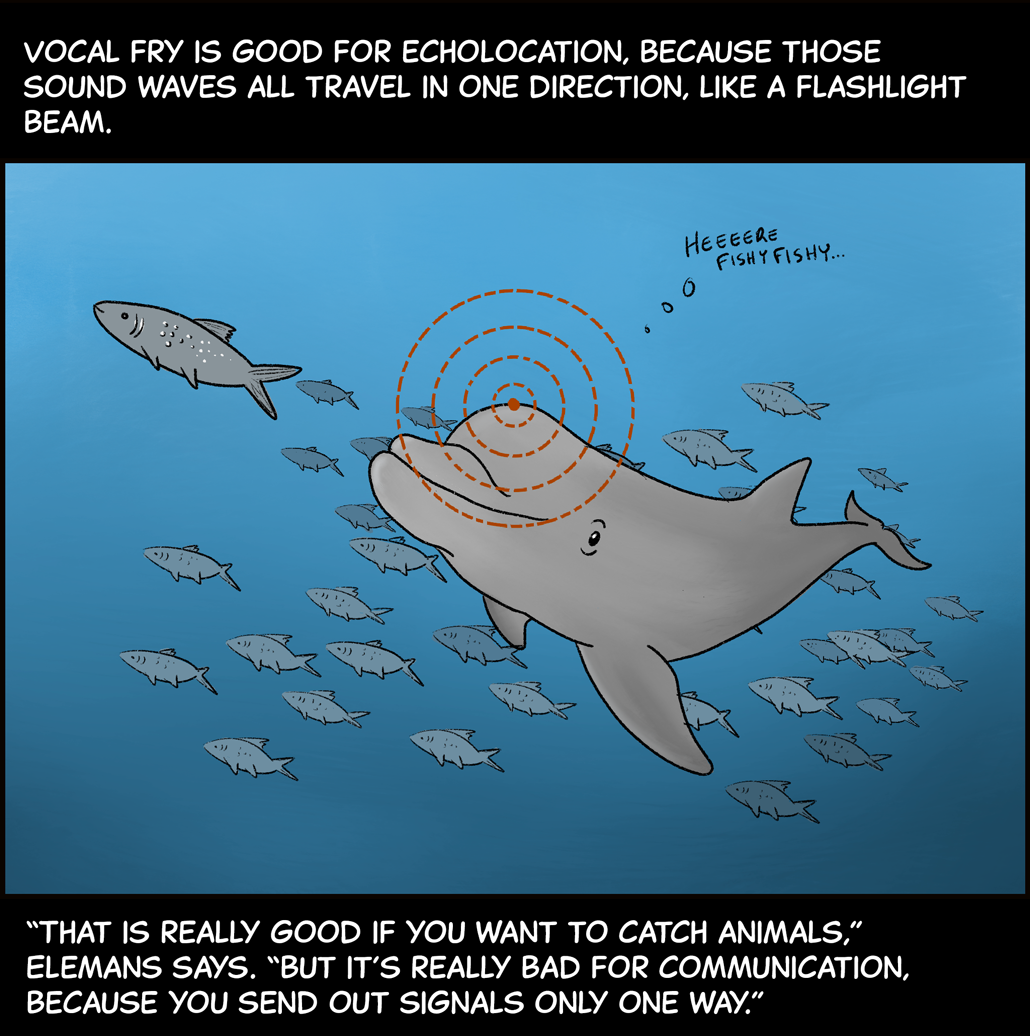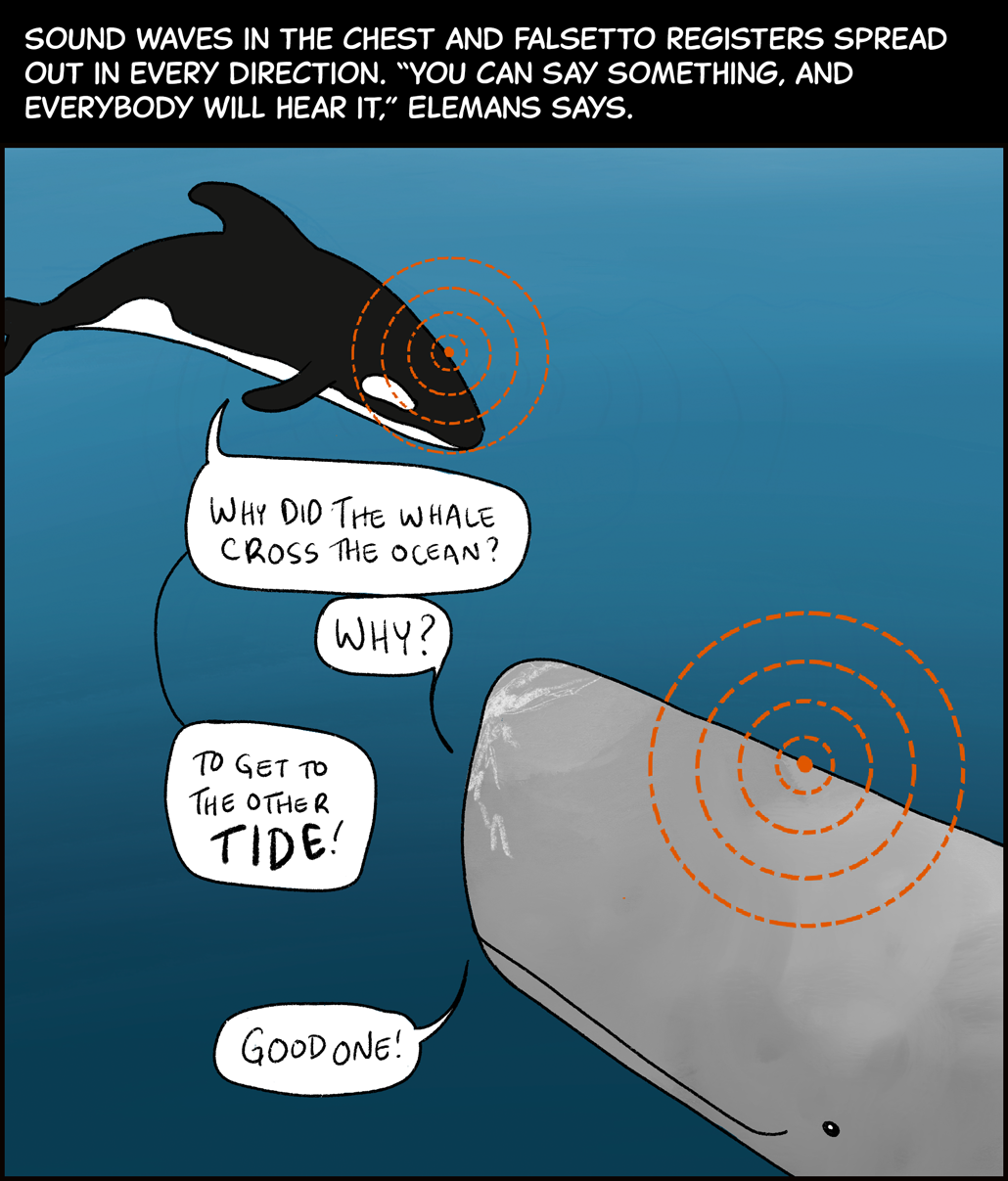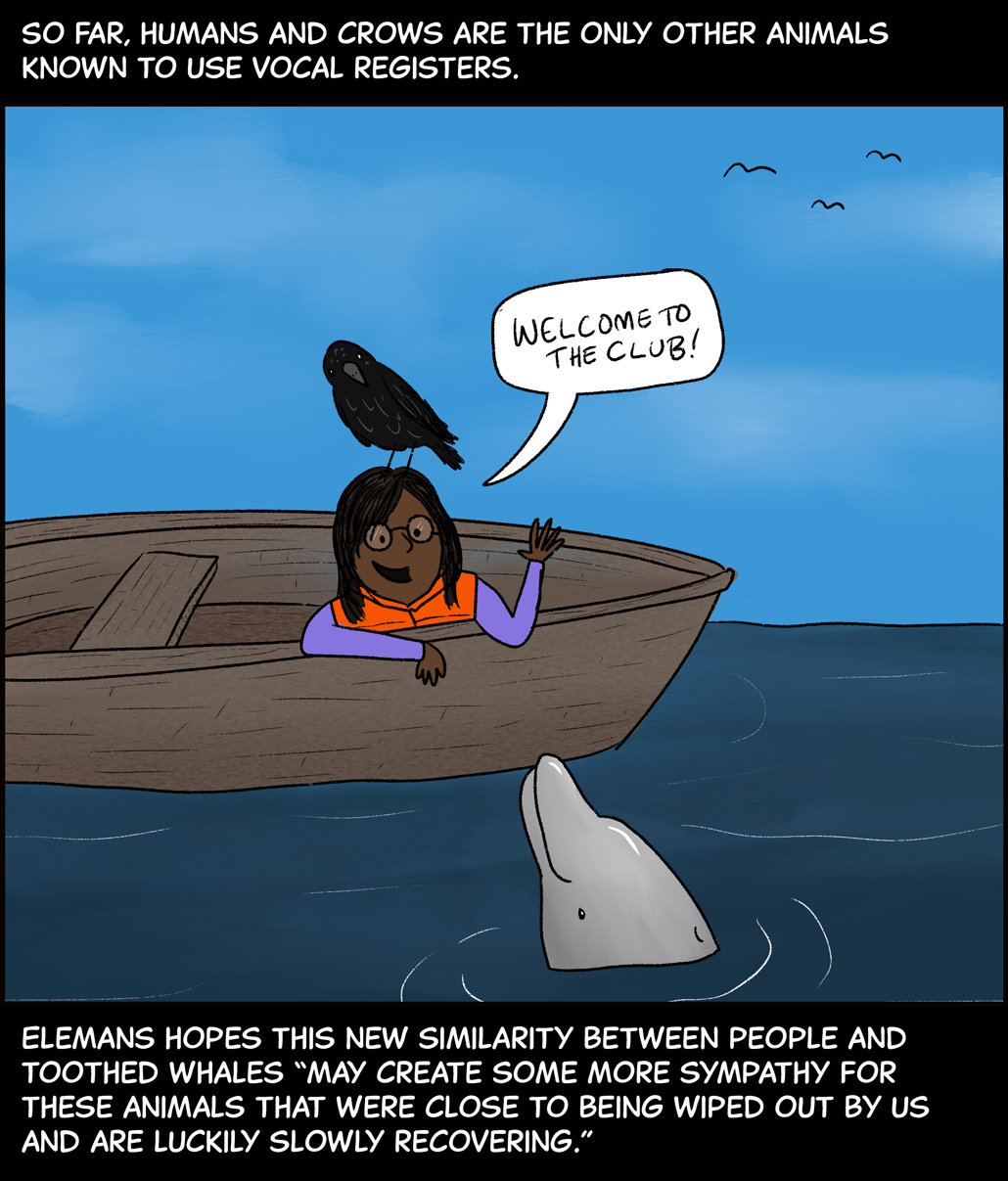biologist: A scientist involved in the study of living things.
blowhole: (in biology) Nostrils on the top of the head of a cetacean (whale, porpoise or dolphin) through which the animal breathes. Toothed whales (like orcas) have one, baleen whales, such as right whales, have a pair.
colleague: Someone who works with another; a co-worker or team member.
dolphins: A highly intelligent group of marine mammals that belong to the toothed-whale family. Members of this group include orcas (killer whales), pilot whales and bottlenose dolphins.
echolocation: (in animals) A behavior in which animals emit calls and then listen to the echoes that bounce back off of solid things in the environment. This behavior can be used to navigate and to find food or mates. It is the biological analog of the sonar used by submarines.
frequency: The number of times some periodic phenomenon occurs within a specified time interval. (In physics) The number of wavelengths that occurs over a particular interval of time.
killer whale: A dolphin species (Orcinus orca) whose name means whale killer. These animals belong to the order of marine mammals known as Cetacea (or cetaceans).
muscle: A type of tissue used to produce movement by contracting its cells, known as muscle fibers. Muscle is rich in protein, which is why predatory species seek prey containing lots of this tissue.
nasal: Having to do with the nose.
navigate: To find one’s way through a landscape using visual cues, sensory information (like scents), magnetic information (like an internal compass) or other techniques.
noise pollution: Harmful or annoying levels of noise. Too much traffic and other human-caused noises can make animals nearby change their behaviors — or even make them leave. Harmful levels of noise can also cause permanent damage to human hearing.
orca: The largest species of dolphin. The name of this black-and-white marine mammal, Orcinus orca, means killer whale.
peer: (verb) To look into something, searching for details.
prey: (n.) Animal species eaten by others. (v.) To attack and eat another species.
sea: An ocean (or region that is part of an ocean). Unlike lakes and streams, seawater — or ocean water — is salty.
sound wave: A wave that transmits sound. Sound waves have alternating swaths of high and low pressure.
sperm whale: A species of enormous whale with small eyes and a small jaw in a squarish head that takes up 40 percent of its body. Their bodies can span 13 to 18 meters (43 to 60 feet), with adult males being at the bigger end of that range. These are the deepest diving of marine mammals, reaching depths of 1,000 meters (3,280 feet) or more. They can stay below the water for up to an hour at a time in search of food, mostly giant squids.
tissue: Made of cells, it is any of the distinct types of materials that make up animals, plants or fungi. Cells within a tissue work as a unit to perform a particular function in living organisms. Different organs of the human body, for instance, often are made from many different types of tissues.
unique: Something that is unlike anything else; the only one of its kind.
vibrate: To rhythmically shake or to move continuously and rapidly back and forth.
voice box: The hollow, muscular organ forming an air passage to the lungs and holding the vocal cords in people and other mammals. It’s also known as the larynx.
vocal folds: Folds of thin tissue that project inward from the sides of the larynx to form a slit across a region in the throat, and whose edges vibrate in the airstream to produce the voice.
vocal fry: The term for a very-low-pitched voice range that people can make. It sounds rough or a bit like a creaking door. Research has shown toothed whales can make vocal-fry sounds, too: It’s their characteristic clicking sounds.
whale: A common, but fairly imprecise, term for a class of large mammals that lives in the ocean. This group includes dolphins and porpoises.
